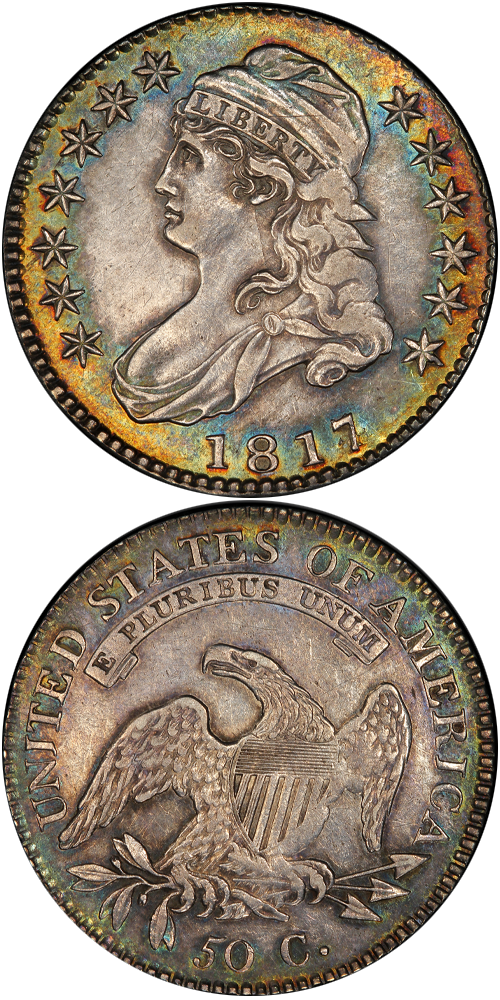1817/4 Capped Bust Half Dollar
Among all the die varieties of Capped Bust half dollars, there are only three rarer than 1817/4 Overton-102: 1825 Overton-118, 1827 Overton-149, and 1829 Overton-120. None of these is imbued with a mystique that transcends the world of the self-identified "Bust Half Nuts," and none is a distinctive overdate variety that is readily identifiable to the unacquainted. Just 11 specimens have been identified. The first was discovered in 1930, when little known dealer Edward T. Wallis, doing business in Los Angeles as the California Stamp Company, announced on the back cover of his Nov. 14, 1930, auction "We just discovered an 1817 over 14 half dollar." Adding that the coin was "Extremely Fine, showing practically no wear," he noted "there is a die break clear across the obverse" that meant "in all probability the die broke in half when this coin was struck, which would explain the reason for this coin being heretofore unknown." Howard Rounds Newcomb, best known today as a large cent specialist but also a devotee of early silver, lived nearby and confirmed the discovery, as did Martin Luther Beistle, then the nation's expert on Bust half dollar varieties.
The 11 known specimens of the 1817/4 half dollar are neatly divided into two groups: Overton-102 (early die state without bisecting obverse crack, five known) and Overton-102a (late die state with bisecting obverse crack, six known). The D. Brent Pogue specimen is the finest surviving specimen of the first group, with the other four all well-worn, damaged, or both. Among the 11 total 1817/4 half dollars known, seven have been graded by PCGS.
Not every coin with personality is rare, and not every rare coin has personality. The most important American coins combine mystique with scarcity, usually in distinctive and eye-catching fashion. The 1817/4 half dollar sits at the pinnacle of one of the most popular specialties in American numismatics. Collectors have yearned to own even the lowest grade specimens, and they’ve paid hundreds of thousands of dollars for specimens that would blend into many dealers' junk boxes if unidentified.
The example to the left was sold by Stack's Bowers Galleries in the 2009 Treasures from the S.S. New York Auction, where it realized $356,500.






